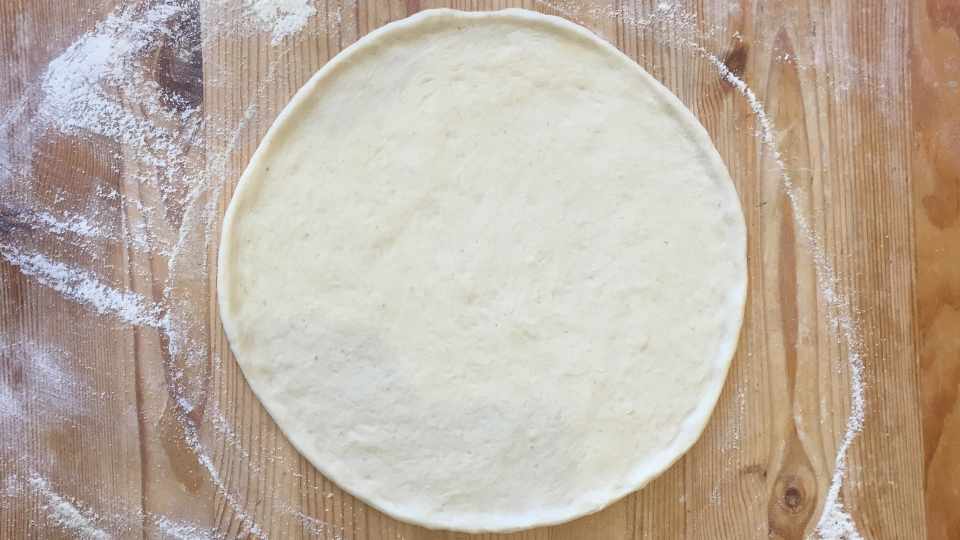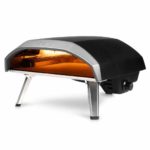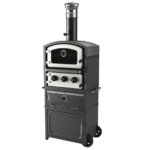What Flour for Pizza Dough is the Best?
Have you ever tried making your pizza at home and wondered why you could never get the dough right? You completed the ingredients in your pantry and followed the instructions to a tee. And after toiling for hours in a blazing kitchen, you end up with a hard and dry crust that somehow became slightly soggy in the middle.
What could have gone wrong?!
There are many factors to consider when making this all-time favourite, like the choice of toppings, the richness of the sauce, and the heat of the oven. But many food connoisseurs agree that the key to a delicious pizza is the crust. And to get this, you’ll need to make the dough well.
The Science Behind a Good Pizza Dough

It is widely believed that cooking is an art, chefs are artists who come up with delicious and beautiful dishes, and diners are the lucky audience who get to experience gastronomic adventures.
But science plays a huge part in cooking. And this is quite evident in making dough.
The dough is composed of five everyday ingredients: flour, water, yeast, oil, and salt. Although every single one plays an important role, the most vital of them all is the flour. Aside from the fact that about 90% of the recipe calls for flour, this is the component which provides structure (shape, height) and texture (crusty, spongy, fluffy) to the end product.
Let’s dive deeper into the science of it all.
First, think of bread (aka baked dough) like the foam that settles on the water in your bathtub. Both have air bubbles in them. The only difference is that bread is solid while your bubble bath is not.
When you add more soap to the bathwater, you get more bubbles. Now, if you want more bubbles in your bread, you will have to add more gluten.
Gluten is the protein naturally found in various grains, including wheat from which flour was derived. If your flour has a good amount of this substance, you can create an elastic dough and, consequently, a well-textured crust.
Top 3 Flour Options for Pizza Dough
There are over a dozen kinds of wheat flour, each with its sub-types. As aforementioned, it’s best to choose a variety with a high gluten content when preparing dough for pizza. It also helps to know the amount of water the flour can absorb since hydration helps to create the perfect structure of the crust. Here are a few great choices:
Caputo
Considered the ‘gold standard’ of flour, this Italian product has a gluten content of 12.5%. The “00” marking often seen on its bags refers to its incredibly fine milling, which basically means it requires very little water when mixing.
Great for authentic Neapolitan pizza, this flour creates a thin, almost crispy base with puffy, slightly chewy sides. The large air bubbles on the thicker parts are quite visible when you tear the piece, demonstrating the flour’s incredible gluten development.
There are different Caputo varieties – Classica, Pizzeria, and Chef’s Flour, just to name a few. All these have high gluten content, making them all perfect for making pizza dough. Grocery chains rarely have this, but you might find one in speciality shops or online.
Bread Flour
This type has a gluten content of 12.7, which is a little more than the top choice mentioned above. But the reason why it’s only ranked second is because of its high water absorption and its lesser mill grading.
The cross-section of the baked dough almost has a similar structure to the Italian variant – tall and airy on the sides and flat in the middle. However, this is very chewy and lacks the crisp texture of the classic Neapolitan crust.
All-Purpose Flour
As the term implies, this can be used in a variety of baked recipes from moist cakes and chewy cookies to crumbly pie crusts and crusty pizza dough. It has a good amount of gluten at 11.7% and moderate water absorption.
The biggest advantage of this flour is its ubiquity (translation: you probably have this in your pantry already) APF is a good option for NY-style pizza crust – not too thin but not too airy and with a slight chewiness. Some gourmets find this quality just passable.
There are several other possible options if you’re up to experimenting. For example, some have used cake or pastry flour and just allowed the dough to rest longer to help the protein develop. However, this created a flat crust that is quite tender. Several American brands also came up with their own “00” flour to compete with their Italian counterparts. But all fell short of expectations as the resulting crust fell flat.
Tips for Creating a Good Dough
On top of using the right kind of flour (clue: that’s any of the three in the shortlist) and incorporating the accurate amount of water based on the absorption levels, here are other pointers which can help you in this kneading venture.
- Add oil, not flour.
Incorporating the ingredients together is a bit of a messy process, and it’s enough for first-timers to get discouraged from making their own pizza dough. But don’t fret, just keep kneading. If it is too gloopy, add a bit more oil instead of flour. Overdoing it with the flour just to get rid of the stickiness in your hand is a surefire way to ruin your dough.
- Knead. Never roll.
This is the simplest technique for newbies: press the dough down on the board with the heel of your hand, fold half of it back on top, and repeat. Never use a rolling pin because this will push out the air bubbles from the dough and ruin the gluten structure within. When the dough does not tear when you pull at it, you can set it aside for rising.
- Patience is virtue
We know you’re itching to add the rest of the toppings onto the dough, stick it in the oven, and get your first oh-so-scrumptious bite. But proofing, or allowing the yeast to release the carbon dioxide into the dough and letting the gluten hold it in, takes at least two hours. Just wait. Trust the process, it’s all worth it.
Your Preference, Your Call
The three wheat flours listed above are the only good options if you’re serious about making good pizza dough. Buy Caputo if you’re willing to spend a bit more and scour the whole city searching for the best. If all you’ve got is APF, go ahead and give that a try.
At the end of the day, people have different preferences when it comes to the crust. Some like it chewy, others like it thin and slightly crisp. Go for what makes you happy. That’s what pizza does!






